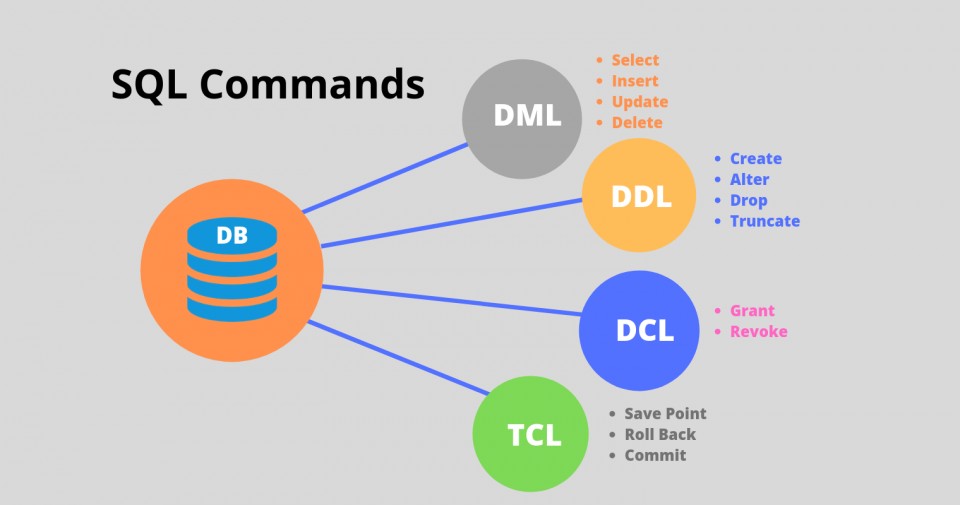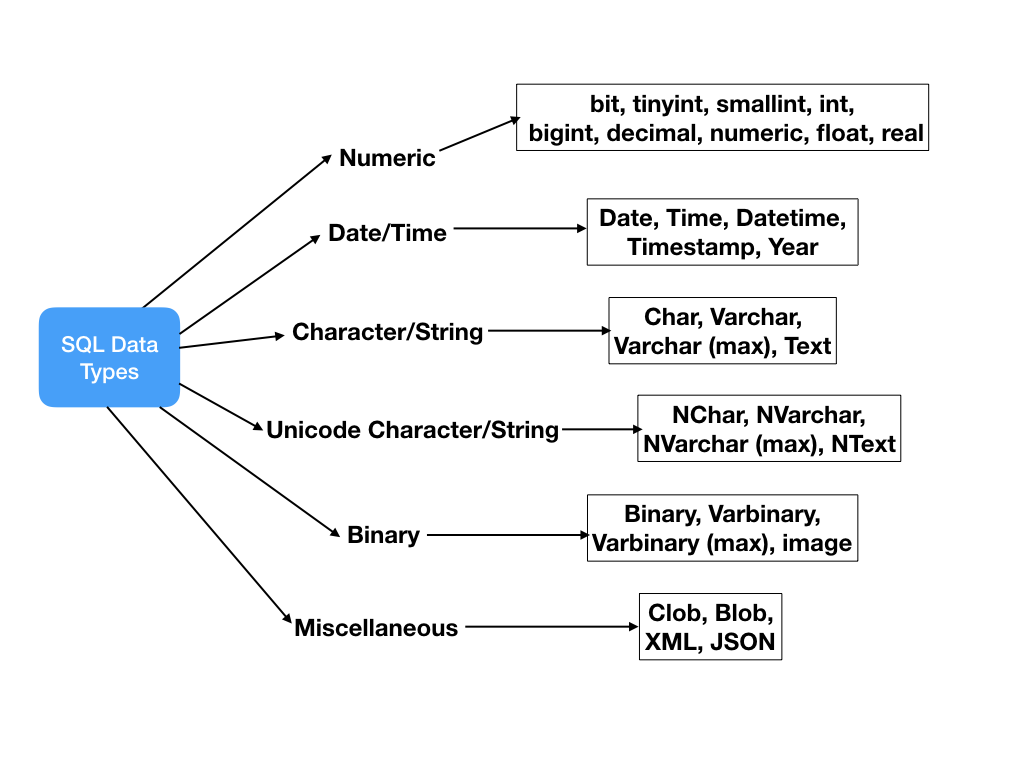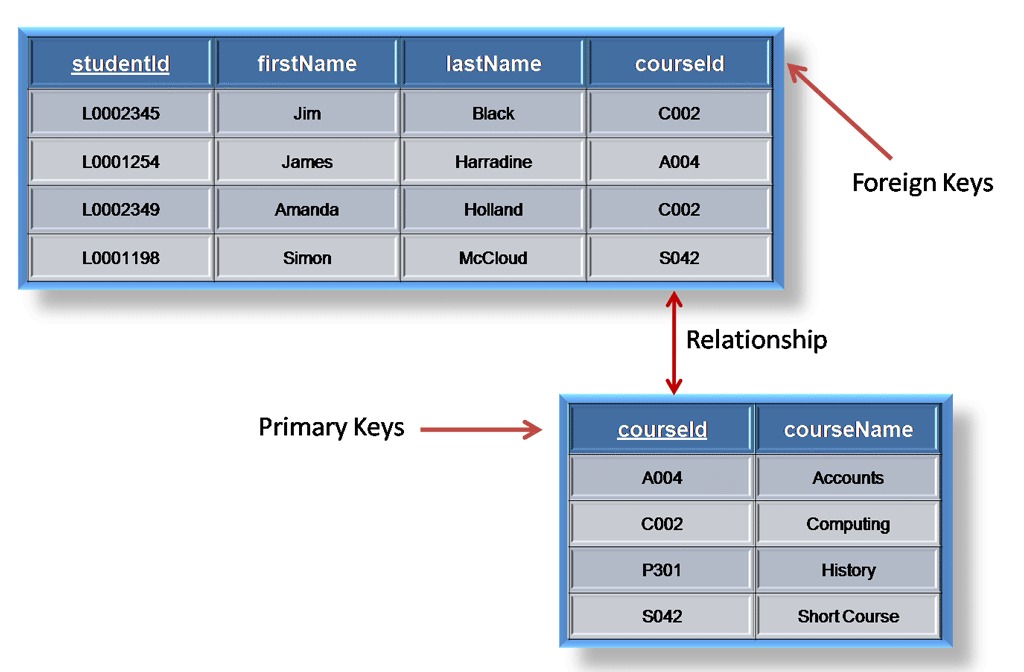What is SQL?
SQL stands for Structure Query Language. For interacting with a database, SQL is used. It is the basic language for relational database management systems, according to ANSI (American National Standards Institute). SQL statements are used for performing tasks, such as modifying database data or extracting database data.
Some popular systems for relational database management Oracle, Sybase, Microsoft SQL Server, Access, Ingres, etc. are some popular relational database management systems that use SQL.
While SQL is used by most database systems, most of them also have their own additional proprietary extensions that are typically only used on their systems. It is possible to use regular SQL commands such as "Select", "Insert", "Update", "Delete", "Create" and "Drop".
There may be questions of all kinds that can be asked in the interview, right from theoretical questions to writing SQL queries. We picked up ten entry level questions that data analyst aspirants are often asked. Take a glance.
Q-1) Explain the various SQL command styles.

These SQL commands are mainly categorized into four categories as:
DDL – Data Definition Language
DML – Data Manipulation Language
DCL – Data Control Language
TCL – Transaction Control Language
A)DDL – Data Definition Language
The DDL or Data Definition Language consists of SQL commands that can be used to define the schema for the database. It basically deals with database schema definitions and is used to construct and change the arrangement of database objects in the database.Commands in DDL are:
CREATE – This command allows creating the database or its objects (like a table, index, function, views, store procedure, and triggers).
DROP –This command allows us to delete objects from the database.
ALTER-This command allows altering the structure of the database.
TRUNCATE–This command allows us to remove all records from a table, including all spaces allocated for the records are removed.
B)DML – Data Manipulation Language
It handles requests from the user. These commands are used to manipulate database data. Some of DML commands include:
SELECT – is used to retrieve data from a database.
INSERT – is used to insert data into a table.
UPDATE – is used to update existing data within a table.
DELETE – is used to delete records from a database table
C)DCL – Data Control Language
DCL contains commands like GRANT and REVOKE that deal primarily with the database system's privileges, permissions, and other controls. It is used for retrieving data stored or saved. Examples of commands from DCL:
GRANT- gives user’s access privileges to the database.
REVOKE-withdraw user’s access privileges given by using the GRANT command.
D)TCL – Transaction Control Language
Inside the database, TCL commands deal with the transaction. They are often used to make the modifications that DML statements make. TCL command examples:
COMMIT– commits a Transaction.
ROLLBACK– rollbacks a transaction in case any error occurs.
SET TRANSACTION–specify characteristics for the transaction.
SAVEPOINT–sets a savepoint within a transaction.
Q-2) What are SQL Data Types?
Q-3)What is the Primary Key?
To uniquely identify all table records, a primary key is used. They cannot contain NULL values, and they must contain unique values. A table may only have a single primary key consisting of single or multiple fields.
Q-4)What is a foreign key?
A foreign key is an attribute or a set of attributes that corresponds to some other table's primary key. So, essentially, it is used to link two tables together.
Q-5)Types of SQL joins?
Here are the different types of the JOINs in SQL:

Q-6) Syntax of INSERT, UPDATE and DELETE in SQL databases.
INSERT INTO table_name (column1, column2, column3, …)
VALUES (value1, value2, value3, …);
DELETE FROM table_name;
UPDATE table_name
SET column1 = value1, column2 = value2, …
WHERE condition;
Q-7)What is an Index?
In the database, indexes help speed up searching. If in the WHERE clause there is no index on any column, then the SQL server has to skim through the whole table and search each and every row to find matches, which could result in the large data operation being slow.
CREATE INDEX INDEX_NAME ON TABLE_NAME (COLUMN)
Q-8)Difference between Having and Where Clause?
 (1).jpg)
Q-9)Difference between Delete and Truncate?
DELETE: This query is used for one or more existing tables to be deleted or replaced.
TRUNCATE: This statement eliminates all the data from the table inside.
Q-10)Difference between SQL and PL/SQL?
.jpg)
Q-11) To be a data scientist, is SQL necessary?
The brief response is yes. Structured Query Language will remain an important part of it as long as there is 'data' in data scientists.
In order to manage structured data, a Data Scientist requires SQL. This structured data is contained in databases with relational data. Therefore, a data scientist needs to have a solid knowledge of SQL in order to query these databases.
Q-12)For Data Science, what SQL skills are needed?
A)Information of Model Relational Database
The primary and foremost required concept for an aspiring Data Scientist is a Relational Database Model System (RDBMS). You must understand RDBMS in-depth in order to store structured data. You can then, via SQL, access, retrieve and manipulate the data. For any data platform, RDBMS is a standard. Also advanced big data systems consist of an RDBMS segment for organised information processing.
B)Knowing of SQL commands
The following SQL commands must be understood by data scientists:
Data Query Language
Data Manipulation Language
Data Definition Language
Data Control Language
C)Null Values To represent a missing value, null is used. In a table, a field which contains a null value is blank. A null value, however, varies from a zero value or a field that contains blank spaces.
4)Indexes
A database search engine can quickly find values in a row with the assistance of special lookup tables. We can rapidly load the data into the database with SQL indexing.
D)Joins
The most significant principles in relational databases that a data scientist must know are table joins. There are two kinds of joins: inner and outer joins. Then they are further broken down into inner, left, right, full, etc.
E)Primary & Foreign Key
Specific values in a database are represented by a primary key. We are able to distinguish every line and record from the database with the use of a primary key. On the other side, a foreign key is used to link two tables together.
F)Subquery
A subquery is a nested query embedded in a separate query. In SQL, there are four broad subqueries:SELECT, INSERT, UPDATE and DELETE. It returns the data to the primary query.
In Data Science, we conclude that SQL plays an important role. As a matter of fact, SQL is emulated by modern big data systems to process organised data generated alongside the unstructured. We have also recognised the numerous essential SQL skills needed for Data Science.
Madrid Software provides huge opportunities to learn and prepare for interview by learning SQL questions for Data Science courses in Delhi helping you to establish a career in Data Scientist by learning all the techniques and growing in terms of knowledge and shaping the future in the right manner.
Madrid Software which is one of the best data science institute in Delhi offers a wide range of courses to students and professionally and also provides end to end knowledge theoretically as well as practically.
So, the role of Data Scientist is very important in any industry in order to leverage their business in a correct manner.
If you are curious about how to implement it, come and join Data Science courses in Delhi and the best training Institute and start your child step in order to grow into an adult.
Some popular systems for relational database management Oracle, Sybase, Microsoft SQL Server, Access, Ingres, etc. are some popular relational database management systems that use SQL.
While SQL is used by most database systems, most of them also have their own additional proprietary extensions that are typically only used on their systems. It is possible to use regular SQL commands such as "Select", "Insert", "Update", "Delete", "Create" and "Drop".
There may be questions of all kinds that can be asked in the interview, right from theoretical questions to writing SQL queries. We picked up ten entry level questions that data analyst aspirants are often asked. Take a glance.
Q-1) Explain the various SQL command styles.

These SQL commands are mainly categorized into four categories as:
DDL – Data Definition Language
DML – Data Manipulation Language
DCL – Data Control Language
TCL – Transaction Control Language
A)DDL – Data Definition Language
The DDL or Data Definition Language consists of SQL commands that can be used to define the schema for the database. It basically deals with database schema definitions and is used to construct and change the arrangement of database objects in the database.Commands in DDL are:
CREATE – This command allows creating the database or its objects (like a table, index, function, views, store procedure, and triggers).
DROP –This command allows us to delete objects from the database.
ALTER-This command allows altering the structure of the database.
TRUNCATE–This command allows us to remove all records from a table, including all spaces allocated for the records are removed.
B)DML – Data Manipulation Language
It handles requests from the user. These commands are used to manipulate database data. Some of DML commands include:
SELECT – is used to retrieve data from a database.
INSERT – is used to insert data into a table.
UPDATE – is used to update existing data within a table.
DELETE – is used to delete records from a database table
C)DCL – Data Control Language
DCL contains commands like GRANT and REVOKE that deal primarily with the database system's privileges, permissions, and other controls. It is used for retrieving data stored or saved. Examples of commands from DCL:
GRANT- gives user’s access privileges to the database.
REVOKE-withdraw user’s access privileges given by using the GRANT command.
D)TCL – Transaction Control Language
Inside the database, TCL commands deal with the transaction. They are often used to make the modifications that DML statements make. TCL command examples:
COMMIT– commits a Transaction.
ROLLBACK– rollbacks a transaction in case any error occurs.
SET TRANSACTION–specify characteristics for the transaction.
SAVEPOINT–sets a savepoint within a transaction.
Q-2) What are SQL Data Types?

Q-3)What is the Primary Key?
To uniquely identify all table records, a primary key is used. They cannot contain NULL values, and they must contain unique values. A table may only have a single primary key consisting of single or multiple fields.
Q-4)What is a foreign key?
A foreign key is an attribute or a set of attributes that corresponds to some other table's primary key. So, essentially, it is used to link two tables together.

Q-5)Types of SQL joins?
Here are the different types of the JOINs in SQL:
- (INNER) JOIN: Returns records that have matching values in both tables
- LEFT (OUTER) JOIN: Returns all records from the left table, and the matched records from the right table
- RIGHT (OUTER) JOIN: Returns all records from the right table, and the matched records from the left table
- FULL (OUTER) JOIN: Returns all records when there is a match in either left or right table

Q-6) Syntax of INSERT, UPDATE and DELETE in SQL databases.
INSERT INTO table_name (column1, column2, column3, …)
VALUES (value1, value2, value3, …);
DELETE FROM table_name;
UPDATE table_name
SET column1 = value1, column2 = value2, …
WHERE condition;
Q-7)What is an Index?
In the database, indexes help speed up searching. If in the WHERE clause there is no index on any column, then the SQL server has to skim through the whole table and search each and every row to find matches, which could result in the large data operation being slow.
CREATE INDEX INDEX_NAME ON TABLE_NAME (COLUMN)
Q-8)Difference between Having and Where Clause?
 (1).jpg)
Q-9)Difference between Delete and Truncate?
DELETE: This query is used for one or more existing tables to be deleted or replaced.
TRUNCATE: This statement eliminates all the data from the table inside.
Q-10)Difference between SQL and PL/SQL?
.jpg)
Q-11) To be a data scientist, is SQL necessary?
The brief response is yes. Structured Query Language will remain an important part of it as long as there is 'data' in data scientists.
In order to manage structured data, a Data Scientist requires SQL. This structured data is contained in databases with relational data. Therefore, a data scientist needs to have a solid knowledge of SQL in order to query these databases.
Q-12)For Data Science, what SQL skills are needed?
A)Information of Model Relational Database
The primary and foremost required concept for an aspiring Data Scientist is a Relational Database Model System (RDBMS). You must understand RDBMS in-depth in order to store structured data. You can then, via SQL, access, retrieve and manipulate the data. For any data platform, RDBMS is a standard. Also advanced big data systems consist of an RDBMS segment for organised information processing.
B)Knowing of SQL commands
The following SQL commands must be understood by data scientists:
Data Query Language
Data Manipulation Language
Data Definition Language
Data Control Language
C)Null Values To represent a missing value, null is used. In a table, a field which contains a null value is blank. A null value, however, varies from a zero value or a field that contains blank spaces.
4)Indexes
A database search engine can quickly find values in a row with the assistance of special lookup tables. We can rapidly load the data into the database with SQL indexing.
D)Joins
The most significant principles in relational databases that a data scientist must know are table joins. There are two kinds of joins: inner and outer joins. Then they are further broken down into inner, left, right, full, etc.
E)Primary & Foreign Key
Specific values in a database are represented by a primary key. We are able to distinguish every line and record from the database with the use of a primary key. On the other side, a foreign key is used to link two tables together.
F)Subquery
A subquery is a nested query embedded in a separate query. In SQL, there are four broad subqueries:SELECT, INSERT, UPDATE and DELETE. It returns the data to the primary query.
In Data Science, we conclude that SQL plays an important role. As a matter of fact, SQL is emulated by modern big data systems to process organised data generated alongside the unstructured. We have also recognised the numerous essential SQL skills needed for Data Science.
Madrid Software provides huge opportunities to learn and prepare for interview by learning SQL questions for Data Science courses in Delhi helping you to establish a career in Data Scientist by learning all the techniques and growing in terms of knowledge and shaping the future in the right manner.
Madrid Software which is one of the best data science institute in Delhi offers a wide range of courses to students and professionally and also provides end to end knowledge theoretically as well as practically.
So, the role of Data Scientist is very important in any industry in order to leverage their business in a correct manner.
If you are curious about how to implement it, come and join Data Science courses in Delhi and the best training Institute and start your child step in order to grow into an adult.
.png)



.png)


 (4).png) Call Now
Call Now